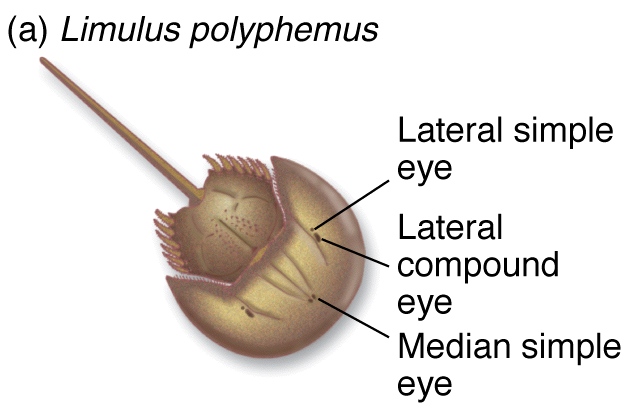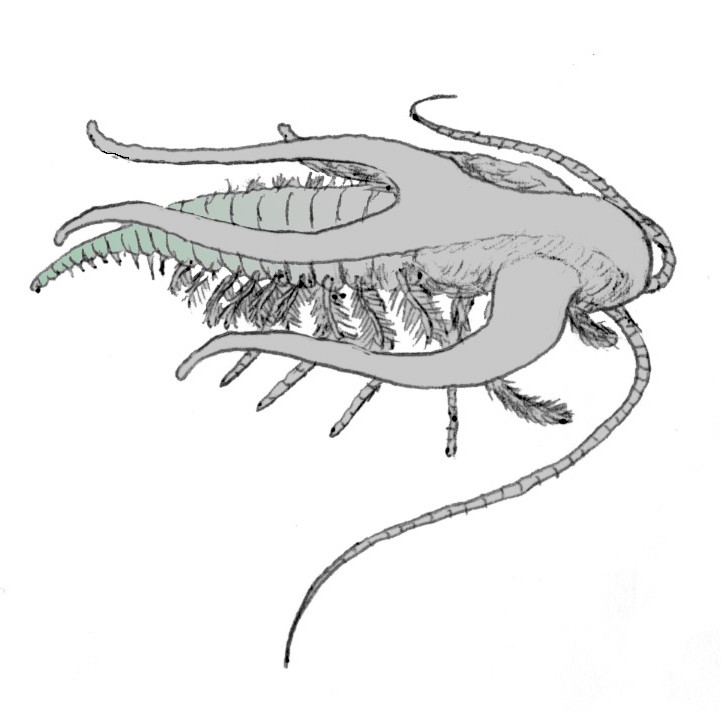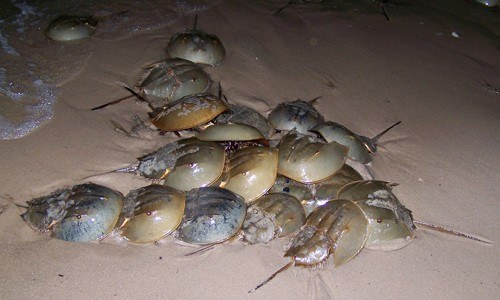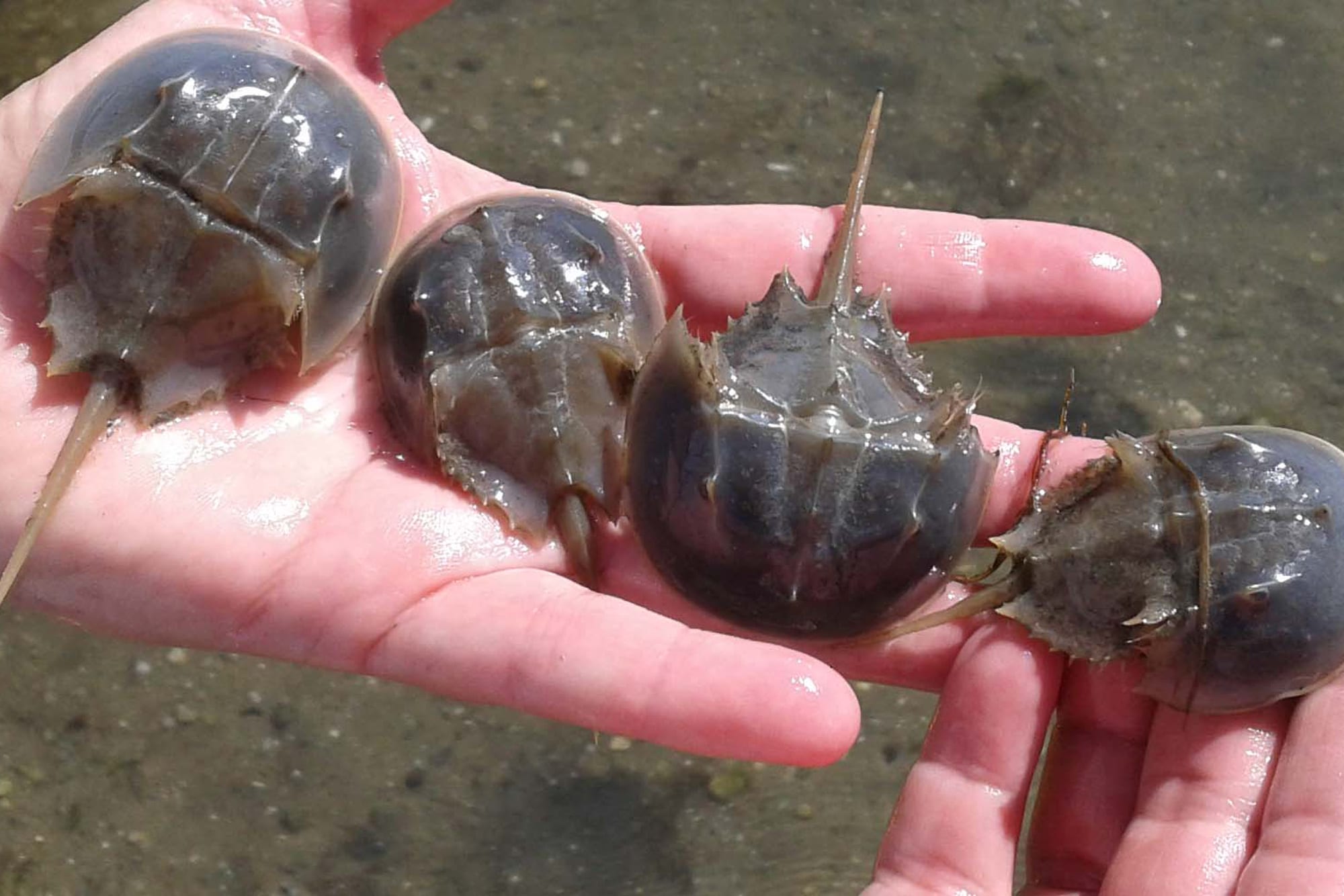
[古生物/多圖] 有無人對古代生物有興趣?一齊傾下
傍觀
744 回覆
742 Like
7 Dislike
古昆蟲先恐怖

化石時期: 泥盆紀(419.2–358.9百萬年前)–最近
鱟 (Horseshoe Crab),又名「馬蹄蟹」、「夫妻魚」,為隸屬肢口綱劍尾目的海生節肢動物,被譽為活化石。現存的鱟種類僅存3屬4種。
鱟的祖先出現在地質歷史時期古生代的泥盆紀,當時恐龍尚未崛起,原始魚類剛剛問世,它是地球上最古老的動物之一。人們曾發現了距今5億年前的鱟化石,它與早已滅絕的三葉蟲是近親。有人也稱它為馬蹄蟹,其實它與蟹沒有關係,倒是跟蠍、蜘蛛有親緣。鱟是節肢動物肢口綱劍尾目動物,現存有3屬4種,分布在美洲和亞洲部分沿海中。中國長江口以南東、南海沿岸、廣西沿海、金門沿海、澎湖沿海等地有它們的身影。鱟隨著時間的推移,與它同時代的動物大都進化或者滅絕,而鱟從4億多年前問世至今仍保留其原始而古老的樣貌

,所以鱟有「活化石」之稱。
D血好似防癌
好似係可以用嚟test一啲biomedical products有無受感染
古昆蟲先恐怖
好似話古地球大氣氧含量高,咩昆蟲都大隻啲


The entire body of the horseshoe crab is protected by a hard carapace. It has 2 compound lateral eyes, each composed of about 1,000 ommatidia, plus a pair of median eyes that are able to detect both visible light and ultraviolet light, a single endoparietal eye, and a pair of rudimentary lateral eyes on the top. The latter become functional just before the embryo hatches. Also, a pair of ventral eyes is located near the mouth, as well as a cluster of photoreceptors on the telson. The horseshoe crab has 5 additional eyes on top of its shell. Despite having a relatively poor eyesight, the animals have the largest rods and cones of any known animal, about 100 times the size of humans',[5][6] and their eyes are a million times more sensitive to light at night than during the day.[7]


三葉蟲 = 節肢動物
強 = 昆蟲
強 = 昆蟲

三葉蟲 = 節肢動物
強 = 昆蟲
但係hexapoda都係under arthropoda嘅一個subphylum

雖然係文科仔,但好鐘意睇依d野
係咪外星生物嚟
隻隻都咁撚似異形
寒武紀古生物發表聯合聲明︰
你就異形
你老母!
我地不知幾撚靚仔
會員小刺蛋包飯 正一外星生物嚟 又樣衰 我地有盔甲幾型
你就成身毛!又臭!
成隻異形咁 最異形係你


馬蹄蟹
啤撚實你地
啤啤啤
係咪外星生物嚟
隻隻都咁撚似異形
寒武紀古生物發表聯合聲明︰
你就異形
你老母!
我地不知幾撚靚仔
會員小刺蛋包飯 正一外星生物嚟 又樣衰 我地有盔甲幾型
你就成身毛!又臭!
成隻異形咁 最異形係你

係咪外星生物嚟
隻隻都咁撚似異形
寒武紀古生物發表聯合聲明︰
你就異形
你老母!
我地不知幾撚靚仔
會員小刺蛋包飯 正一外星生物嚟 又樣衰 我地有盔甲幾型
你就成身毛!又臭!
成隻異形咁 最異形係你
同你有親咩呢啲生物

泣見黎明
奇蝦

Marrella
寒武紀中期
Marrella splendens is an arthropod known from the middle Cambrian Burgess Shale of British Columbia. It is the most common animal represented in the Burgess Shale.
Marrella splendes 馬瑞拉蟲
查爾斯.沃考特在1909年發現博吉斯頁岩,他找到的第一件化石物種就是Marrella splendes,Marrella之名源自於沃考特形容它像「花邊蟹(lace crab)」。這是一種節肢動物,是三大主要水生節肢動物──甲殼綱、三葉蟲亞門與螯肢亞門等的祖先。



寒武紀中期
Marrella splendens is an arthropod known from the middle Cambrian Burgess Shale of British Columbia. It is the most common animal represented in the Burgess Shale.
Marrella splendes 馬瑞拉蟲
查爾斯.沃考特在1909年發現博吉斯頁岩,他找到的第一件化石物種就是Marrella splendes,Marrella之名源自於沃考特形容它像「花邊蟹(lace crab)」。這是一種節肢動物,是三大主要水生節肢動物──甲殼綱、三葉蟲亞門與螯肢亞門等的祖先。



寒武紀好多古怪野
有排Post
你地搞
有排Post
你地搞

唔錯 幾鐘意古代生物 巨大生物
Btw 大家諗下 世界咁大 有時睇地圖 成日見香港都係一粒米咁細 個海咁大 要容納一種生物有一棟大廈咁大一d都唔過分 什至一個小島咁大
反正巨大生物身陳代謝低 食量唔需要咁大 係海洋深處活動 捕食鯨/大章魚 或者只係好似鯨魚咁食鏻蝦
Btw 大家諗下 世界咁大 有時睇地圖 成日見香港都係一粒米咁細 個海咁大 要容納一種生物有一棟大廈咁大一d都唔過分 什至一個小島咁大
反正巨大生物身陳代謝低 食量唔需要咁大 係海洋深處活動 捕食鯨/大章魚 或者只係好似鯨魚咁食鏻蝦
寒武紀好多古怪野
有排Post
你地搞
咁快放棄

留名
正

仙女蝦









